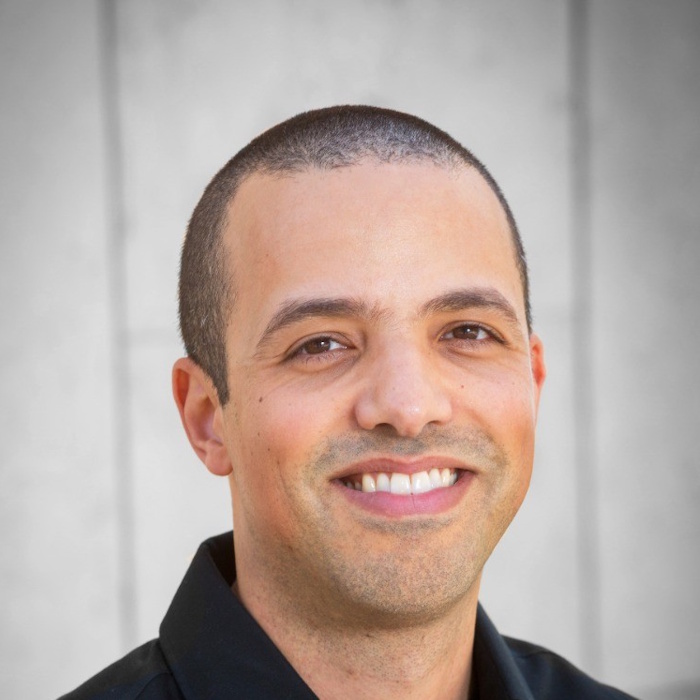Professor Itamar Harel
Itamar Harel, Ph.D. is an Associate Professor of Genetics at The Hebrew University of Jerusalem’s Silberman Institute of Life Sciences and Principal Investigator of the Harel Lab with over 12 years of experience in experimental biology of vertebrate aging and age-related diseases. He is a member of the Jerusalem Brain Community (JBC) and a Zuckerman Faculty Scholar who has pioneered the African turquoise killifish as the premier genetic model for rapid exploration of aging in vertebrates.
Itamar leads groundbreaking research on the molecular mechanisms underlying vertebrate aging, having developed the first comprehensive genetic platform using the naturally short-lived African turquoise killifish (Nothobranchius furzeri). His work has transformed this organism into a powerful model system that lives only 4–6 months yet recapitulates human aging processes, enabling rapid genetic studies that would take years in traditional models. Read The killifish germline regulates longevity and somatic repair in a sex-specific manner.
In 2024, he was selected for the prestigious EMBO Young Investigator Programme and received the Krill Prize for Excellence in Scientific Research, recognizing his innovative contributions to aging biology. His laboratory received a €2 million European Research Council (ERC) Starting Grant in 2023 to advance his research on aging mechanisms. Read Genetic Perturbation of AMP Biosynthesis Extends Lifespan and Restores Metabolic Health in a Naturally Short-Lived Vertebrate.
At Hebrew University since 2018, Itamar has established a leading research program investigating fundamental questions in biology, including why aging is such a potent driver of disease and what molecular basis underlies the 1000-fold diversity in vertebrate lifespans. His recent breakthrough research published in Nature Aging in 2024 revealed sex-specific mechanisms of how the germline regulates longevity, showing that germline depletion enhances damage repair in female killifish while extending lifespan and rejuvenating metabolic functions in males.
In 2023, his team’s work on AMP biosynthesis manipulation resulted in the first long-lived genetic model in killifish, with heterozygous male fish showing significant lifespan extension and metabolic rejuvenation. The research employs cutting-edge techniques including single-cell sequencing, CRISPR/Cas9 genome editing, and integrated omics approaches. Read A platform for rapid exploration of aging and diseases in a naturally short-lived vertebrate and watch Experimental Biology of Vertebrate Aging.
During his postdoctoral training from 2013 to 2017 with Prof. Anne Brunet at Stanford University’s Department of Genetics, Itamar spearheaded the development of the killifish as a genetic model for aging research. He was instrumental in sequencing and assembling the killifish genome, developing CRISPR/Cas9-based genome editing protocols, and generating the first mutant lines within just 2–3 months. His groundbreaking work demonstrated that killifish deficient for telomerase exhibit the fastest onset of telomere-related pathologies among vertebrates, with results published in prestigious journals including Cell and Nature Protocols.
This research was supported by prestigious fellowships including the Damon Runyon Cancer Research Foundation, the Human Frontier Science Foundation, and the Rothschild Foundation. Read Efficient genome engineering approaches for the short-lived African turquoise killifish and The African Turquoise Killifish Genome Provides Insights into Evolution and Genetic Architecture of Lifespan.
Itamar earned his Ph.D. in Developmental Biology in 2012 from the Weizmann Institute of Science under the supervision of Prof. Eldad Tzahor, where he identified novel regulatory networks underlying cardiac and head muscle development, regeneration, and disease using mouse and chicken model systems. His doctoral research resulted in multiple publications in PNAS and Development, establishing fundamental mechanisms of muscle development. He earned his Bachelor’s degree in Life Sciences in 2005 from Ben-Gurion University of the Negev, where he first developed his interest in biological mechanisms and aging processes.
Throughout his career, Itamar has received numerous prestigious awards and recognitions. In addition to his 2024 EMBO Young Investigator selection and Krill Prize, he was elected as a Zuckerman Faculty Scholar in 2018, received the Israeli-American Council Award of Excellence and Community Leadership in 2015, and was awarded the Ilan Ramon Award for Outstanding Academic Achievements in 2010.
He has published over 30 peer-reviewed articles in leading journals with over 2,500 citations, establishing himself as a leader in the field of vertebrate aging biology. His work has been featured in Nature Methods, Cold Spring Harbor Perspectives, and numerous international conferences. Read The turquoise killifish, CRISPR–Cas9 Genome Editing in Nothobranchius furzeri for Gene Knockout and Knock-In, and Scaling life as an interspecies hallmark of aging.
Itamar is deeply committed to science education and outreach, regularly delivering academic and popular science lectures, leading training courses, and organizing scientific conferences. His laboratory at Hebrew University consists of a diverse team of graduate students and postdoctoral researchers working on various aspects of aging biology, from protein aggregation in the aging brain to metabolic regulation of lifespan.
The lab’s research has received funding from multiple sources including the Israel Science Foundation (ISF), the European Research Council, and various international collaborations including work with the Max Planck Institute for Biology of Ageing. Watch Experimental Biology of Vertebrate Aging and Age-Related Diseases at The Hebrew University of Jerusalem. Read AMP biosynthesis key to longevity and metabolic health in vertebrates.
Itamar lives in Jerusalem with his family and continues to push the boundaries of aging research, with his ultimate goal being to identify novel pathways that can slow the aging process and delay the onset of age-related diseases.
Watch Interview with Itamar Harel.
Visit his LinkedIn profile, Lab Homepage, Google Scholar page, and ORCID profile. Follow him on Facebook, Instagram, and X.
